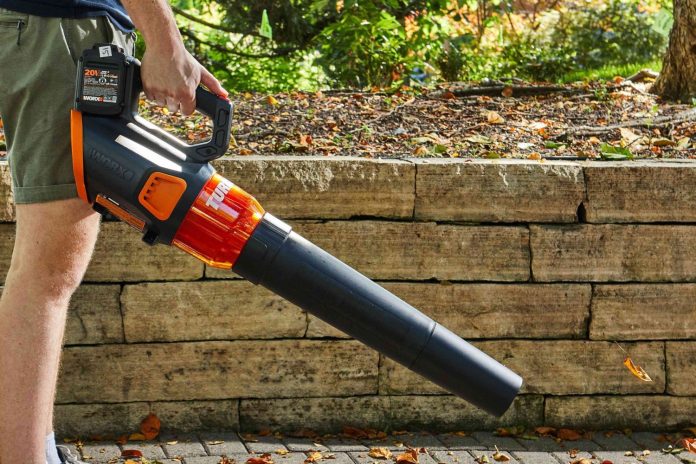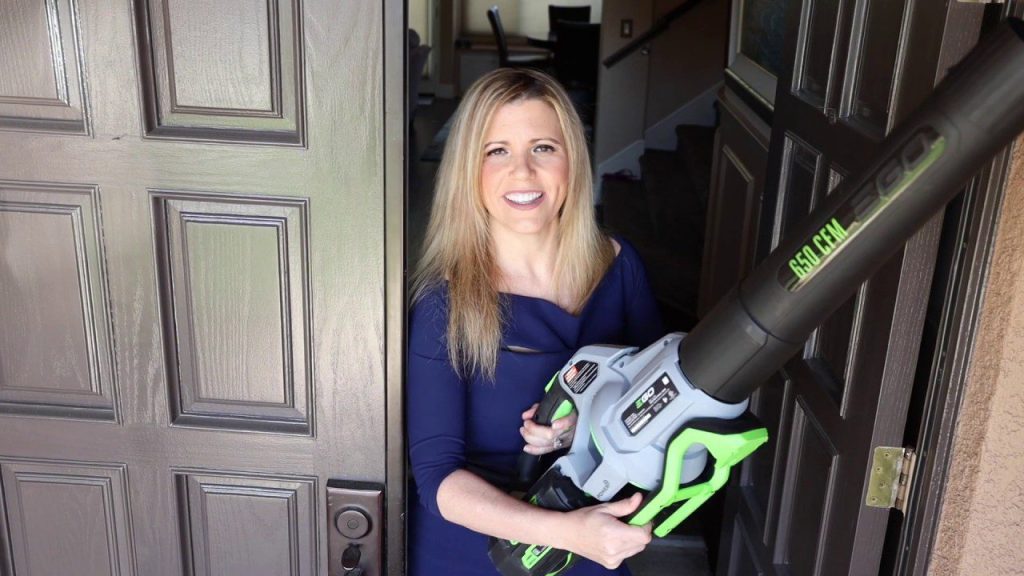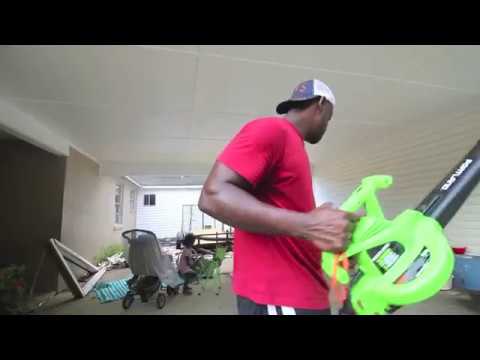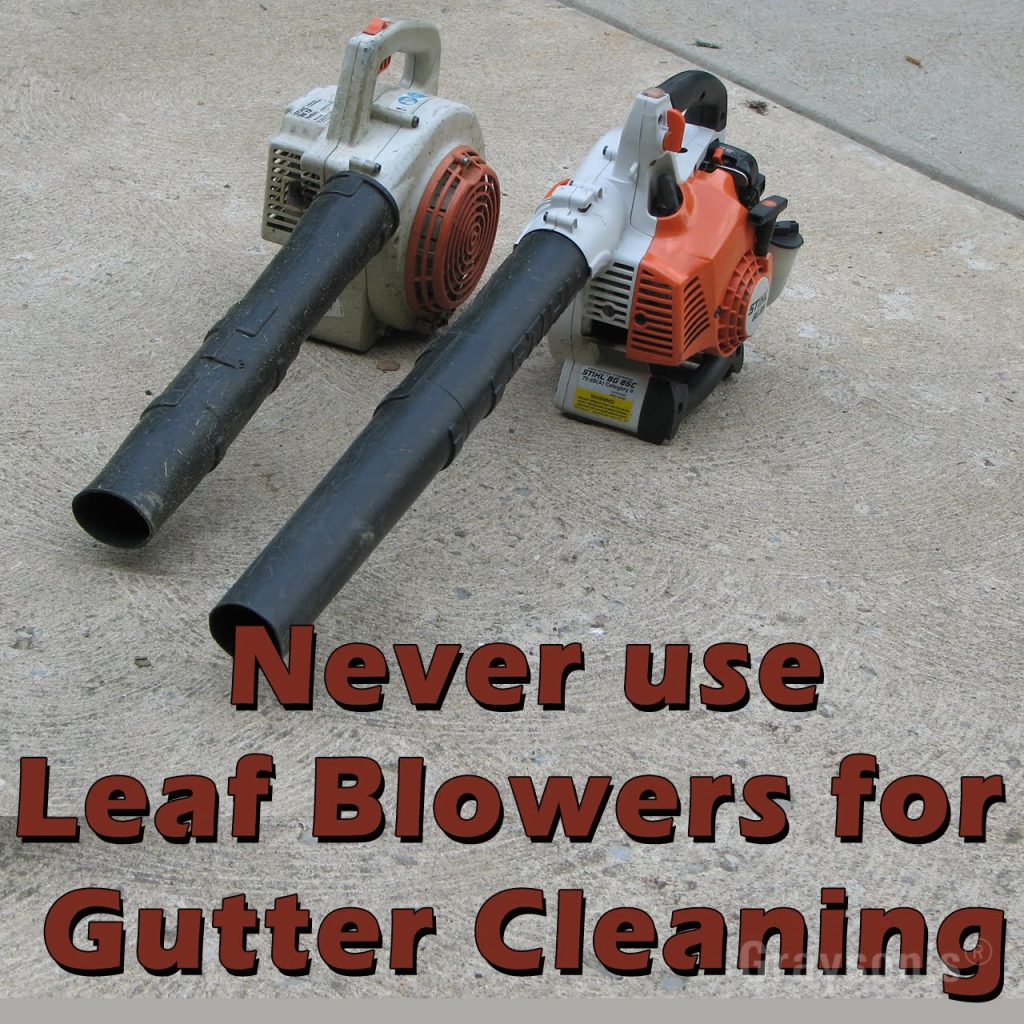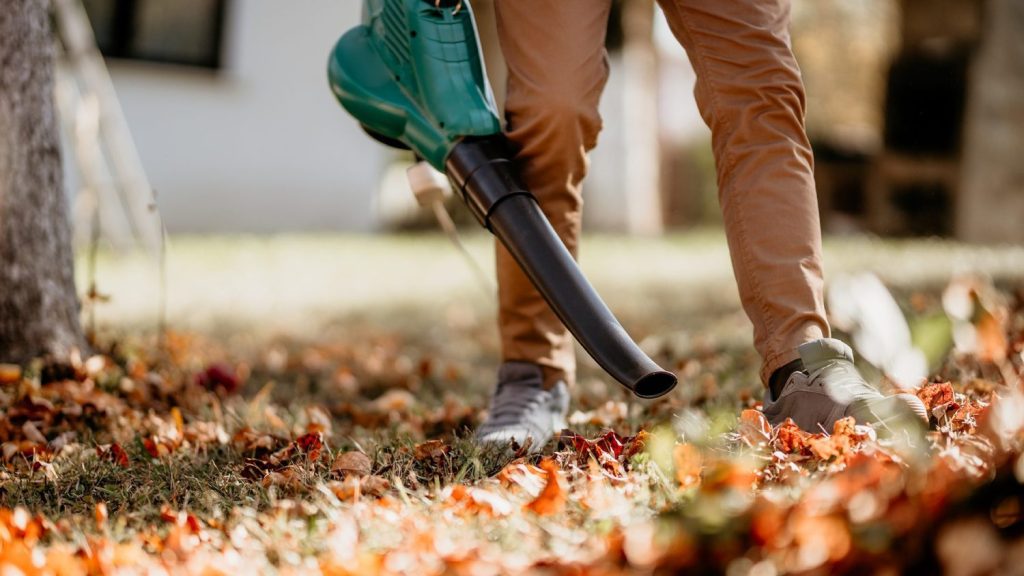Are you looking to banish the dust bunnies from your home with more force? The question of whether or not you can use a leaf blower indoors for cleaning might have crossed your mind.
While leaf blowers are commonly used for tidying up outdoor spaces, the idea of employing this powerful tool inside might seem unconventional.
In this article, we will explore the benefits and risks of using a leaf blower indoors for cleaning, providing you with the information you need to make an informed decision.
So, before you grab your leaf blower and embark on an indoor cleaning adventure, let’s examine the facts together.
Safety Concerns
Risk of Injury
When using a leaf blower indoors, there is an increased risk of injury. The powerful airflow produced by leaf blowers can lead to accidents if not handled properly. This is especially true in tight or cluttered spaces with a higher chance of tripping over cords or obstacles. Additionally, the force of the air can cause objects to be propelled and potentially cause harm to people or pets in the vicinity.
Potential for Damage
Using a leaf blower indoors can also pose a risk of damage to objects and surfaces. The forceful airflow generated by the blower can easily knock over delicate items or damage fragile surfaces such as window panes or artwork. Furthermore, the high-speed air can dislodge loose paint or create dust clouds, leading to potential damage or contamination.
Lack of Proper Ventilation
One primary concern with using a leaf blower indoors is the lack of proper ventilation. Leaf blowers generate many air pollutants and particles, including dust, pollen, and allergens. Without proper ventilation, these particles can linger in the indoor environment, posing a risk to those with respiratory conditions or allergies. Additionally, the lack of fresh air circulation can lead to an accumulation of fumes, which can be hazardous to health.
Suitability for Indoor Cleaning
Type of Leaf Blower
Not all leaf blowers are suitable for indoor cleaning. Gas-powered leaf blowers, for example, emit fumes and combustion by-products that can be harmful in an enclosed space. On the other hand, electric leaf blowers produce less emissions and are generally safer for indoor use. However, choosing a leaf blower with variable speed settings is essential to have better control over the airflow, as high-powered blowers may be too intense for indoor cleaning.
Size of the Area
The size of the area being cleaned is an essential factor to consider when using a leaf blower indoors. Larger indoor spaces, such as warehouses or gymnasiums, may be more suitable for leaf blower use due to the better dispersion of the airflow. However, in smaller rooms or cramped spaces, the forceful air produced by a leaf blower may be too intense and cause objects to be blown around or damaged.
Type of Debris
The type of debris present in the indoor environment should also be considered. Leaf blowers are designed to remove leaves and light debris from outdoor surfaces. When used indoors, they may be less effective at removing heavier or sticky substances, such as mud or spilled liquids. In such cases, alternative cleaning methods may be more appropriate.
Sensitivity of the Environment
If the indoor environment is sensitive to dust or noise, using a leaf blower may not be the best option. For example, alternative methods like vacuum cleaners or microfiber cloths may be preferred in healthcare settings or laboratories where cleanliness and minimal disturbance are crucial. It is essential to assess the specific needs and requirements of the indoor environment before deciding on the cleaning method.
Effectiveness
Limited Cleaning Power
While leaf blowers are highly effective for outdoor cleaning, their cleaning power is often limited when used indoors. The airflow generated by leaf blowers may not be as effective in dislodging and removing dirt, dust, and debris trapped on indoor surfaces. This limitation is particularly evident on textured or uneven surfaces where the airflow may not reach every crevice.
Difficulty in Controlling Debris
When using a leaf blower indoors, controlling the direction and movement of debris can be challenging. The forceful airflow can cause debris to scatter and become difficult to gather or collect. This can result in a longer and more labor-intensive cleaning process and potential damage to nearby objects or surfaces.
Potential for Scatter
In addition to difficulty controlling debris, leaf blowers tend to scatter fine particles, such as dust or allergens. This can result in these particles being dispersed throughout the indoor environment, leading to potential respiratory issues for occupants. It is essential to be mindful of this scattering effect when using a leaf blower indoors and take appropriate measures to minimize the spread of particles.
Inefficient for Certain Surfaces
Leaf blowers may not be suitable for all types of indoor surfaces. Delicate or easily damaged materials, such as carpets, drapes, or fragile electronic equipment, may be more susceptible to damage or disruption from the forceful airflow of a leaf blower. In such cases, alternative methods like vacuuming or gentle wiping with microfiber cloths may be safer and more effective.
Alternative Indoor Cleaning Methods
Use of Vacuum Cleaners
Vacuum cleaners are a popular alternative to leaf blowers for indoor cleaning. They are designed for indoor use and effectively remove dust, dirt, and debris from various surfaces. Vacuum cleaners equipped with HEPA filters can also help maintain indoor air quality by capturing particles as small as 0.3 microns in size. This makes them particularly beneficial for individuals with allergies or asthma.
Mopping and Sweeping
Traditional cleaning methods like mopping and sweeping are highly effective for hard floors. These methods allow for better control of the cleaning process and minimize the dispersion of dust and debris. Mopping with a damp mop can further help trap and remove fine particles, leaving the indoor environment cleaner and healthier.
Microfiber Cloths and Dusting Tools
Microfiber cloths and dusting tools offer a gentle yet effective way to remove dust and debris from surfaces. These tools attract and capture particles rather than scatter them in the air. Microfiber materials also have the advantage of being reusable and easy to clean, making them environmentally friendly options for indoor cleaning.
HEPA Filtration Systems
In environments where indoor air quality is a priority, using HEPA filtration systems can significantly improve the cleanliness of the indoor space.
These systems can be installed in HVAC systems or used as standalone air purifiers to trap and remove airborne particles, including allergens, pollen, and dust. HEPA filters are highly efficient at capturing particles as small as 0.3 microns, ensuring cleaner and healthier indoor air.
Potential Damage and Hazards
Blowing Fragile Items
One of the primary concerns when using a leaf blower indoors is the potential for blowing or damaging fragile items. The forceful air a leaf blower produces can easily knock over or break delicate objects such as vases, picture frames, or ceramic figurines. It is crucial to carefully assess the surroundings and remove or secure any fragile items before using a leaf blower indoors to prevent accidents or damage.
Dispersal of Hazardous Particles
Leaf blowers have the potential to disperse hazardous particles, especially in environments where toxic materials, chemicals, or pollutants are present. The forceful airflow can lift and spread these particles, creating a health risk for those nearby. Before using a leaf blower indoors, it is essential to identify and mitigate any potential hazards to ensure the safety of occupants.
Noise Pollution
Leaf blowers are notorious for their noise levels, and using them indoors can exacerbate the issue. The high-decibel noise from leaf blowers can be disruptive and bothersome to occupants and neighbors. It is essential to consider the noise impact when using a leaf blower indoors and take appropriate measures to mitigate it, such as using ear protection or scheduling cleaning activities during less sensitive hours.
Electrical Safety
Using an electric leaf blower indoors introduces the risk of electrical hazards. Ensuring proper grounding and using grounded electrical outlets is essential to minimize the risk of electrical shock or fire. It is important to follow the manufacturer’s instructions and safety guidelines when using electrical equipment indoors and to regularly inspect cords and plugs for any signs of damage or wear.
Leaf Blower Indoor Cleaning Tips
Choose the Right Type and Size
When selecting a leaf blower for indoor cleaning, choosing a suitable model for indoor use is essential. Electric leaf blowers are typically preferred over gas-powered ones due to their lower emissions and quieter operation. Additionally, choosing a leaf blower with adjustable speed settings allows for better control over the airflow, making it easier to handle in indoor environments.
Properly Maintain the Blower
Regular leaf blower maintenance is crucial to ensure its safe and effective operation indoors. This includes cleaning or replacing air filters, checking for loose or damaged parts, and lubricating moving components. Regular maintenance not only extends the lifespan of the leaf blower but also reduces the risk of malfunctions or accidents while cleaning.
Use Protective Gear
Protective gear, such as safety goggles, gloves, and dust masks, should be worn when using a leaf blower indoors. Safety goggles protect the eyes from debris or objects that may become airborne during cleaning. Gloves help better grip the blower and protect against potential injuries. Dust masks or respirators help filter out harmful particles and improve respiratory safety.
Control the Airflow
Controlling the airflow of the leaf blower is essential to prevent damage or accidents. Begin cleaning at a low speed and gradually increase as needed. Direct the airflow away from delicate objects or surfaces to minimize the risk of damage. Additionally, consider using attachments or nozzles that provide more focused airflow, allowing for better control and precision during cleaning.
Minimize Dust and Debris
To minimize the dispersal of dust and debris, it is essential to take preventive measures before and during the cleaning process—close windows and doors to prevent airflow from carrying particles to other areas. Cover or remove items that may be easily dislodged or damaged by the force of the blower. Regularly clean or replace filters in the leaf blower to prevent clogging and improve efficiency.
Plan an Exit Strategy
When cleaning with a leaf blower indoors, it is essential to have an exit strategy to avoid walking through the debris or stirring up settled dust. Start cleaning from one end of the room and gradually work towards the exit. This allows for a smoother and more efficient cleaning process while minimizing the chances of tracking dirt or dust back into the cleaned area.
Benefits of Outdoor Use Only
Designed for Outdoor Cleaning
Leaf blowers are primarily designed for outdoor use, where their powerful airflow is optimized for removing leaves, grass clippings, and light debris from outdoor surfaces. Utilizing leaf blowers outdoors allows them to function as intended, ensuring better cleaning results and equipment longevity.
Prevents Indoor Air Pollution
Using a leaf blower indoors can reduce indoor air pollution by releasing particulate matter and pollutants into the indoor environment. Limiting leaf blower usage to outdoor areas keeps airborne particles and pollutants outside, preserving indoor air quality and reducing the risk of respiratory issues for occupants.
Less Potential for Damage
The risk of causing damage to delicate objects, surfaces, or indoor structures is significantly lower when using a leaf blower outdoors. The forceful airflow of leaf blowers is less likely to harm exterior surfaces, reducing the chance of accidents or costly repairs. This makes outdoor use safer for both the user and the environment.
Avoids Disruption of Indoor Environment
Leaf blowers are known for their noise levels, which can be disruptive in indoor environments such as offices, residential buildings, or schools. Limiting leaf blower usage to outdoor spaces minimizes disturbances and distractions, allowing for a more peaceful and focused indoor environment.
Noise Considerations
Decibel Levels
Leaf blowers are notorious for their high noise levels, with gas-powered blowers typically louder than electric ones. A leaf blower’s decibel (dB) level can vary depending on the make and model. It is essential to check the manufacturer’s specifications for the noise level of a leaf blower before using it indoors. Opting for quieter models or electric leaf blowers can help reduce noise pollution.
Ear Protection
When operating a leaf blower indoors, it is essential to protect your hearing with proper ear protection. The prolonged exposure to high-decibel noise can lead to hearing damage and loss over time. Earplugs or earmuffs designed for noise reduction should be worn to minimize the risk of hearing-related complications.
Neighborhood Noise Regulations
Before using a leaf blower outdoors, it is essential to familiarize yourself with any neighborhood or local noise regulations. Some areas have noise restrictions that dictate when leaf blowers can be used and the maximum allowable noise levels.
Adhering to these regulations helps maintain a harmonious relationship with neighbors and the community while respecting noise pollution limitations.
Legality and Restrictions
Local Laws and Regulations
Laws and regulations regarding leaf blowers can vary by region, municipality, or jurisdiction. Researching and understanding the local laws governing leaf blower usage is essential before using one outdoors. Some areas may have restrictions on noise levels, specific hours of operation, or even bans on certain types of leaf blowers.
Community Rules and Bylaws
In addition to local laws, communities or residential areas may have specific rules or bylaws concerning using leaf blowers. These rules may restrict usage to certain hours, require noise reduction measures, or even prohibit leaf blowers altogether. Respecting and adhering to these rules is crucial to maintaining good relations with neighbors and the community.
Noise Restrictions
One joint restriction related to leaf blowers is noise limits. Many jurisdictions have specific noise regulations that dictate outdoor equipment’s maximum allowable noise level, including leaf blowers. These limits minimize noise pollution and protect the community’s well-being. It is essential to be aware of and comply with these noise restrictions to avoid potential fines or legal issues.
Environmental Regulations
In some regions, there may be environmental regulations in place that affect the use of leaf blowers. These regulations may impose restrictions on emissions, particularly for gas-powered leaf blowers. This is done to protect air quality and reduce pollution. Complying with these environmental regulations ensures a cleaner and healthier environment for all.
Conclusion
While using a leaf blower indoors for cleaning may seem convenient, it comes with various safety concerns, potential damage risks, and limitations in effectiveness.
Due to the potential for injury, damage to objects and surfaces, lack of proper ventilation, and limited cleaning power, alternative methods such as vacuum cleaners, mopping and sweeping, microfiber cloths, and HEPA filtration systems are often more suitable for indoor cleaning.
Additionally, the dispersal of hazardous particles, noise pollution, and electrical safety hazards further highlight the need to carefully consider the suitability and potential risks of using a leaf blower indoors.
The risks can be minimized by following safety tips, using protective gear, and selecting the right type and size of leaf blower. However, it is still important to use caution and prioritize the cleanliness and safety of the indoor environment.
Ultimately, leaf blowers are designed for outdoor cleaning and are best utilized in such settings. They can effectively remove leaves, grass clippings, and light debris from outdoor surfaces, preventing indoor air pollution and reducing the potential for damage or disruption in the indoor environment.
By prioritizing outdoor use and following local laws, regulations, and noise considerations, the benefits of leaf blowers can be enjoyed while minimizing negative impacts on the environment and the occupants of indoor spaces.

